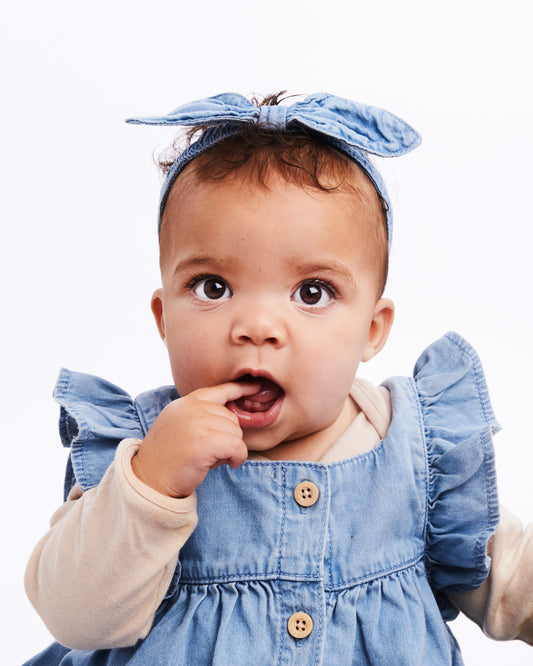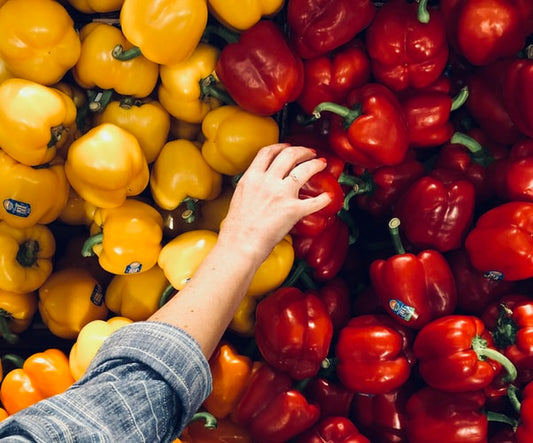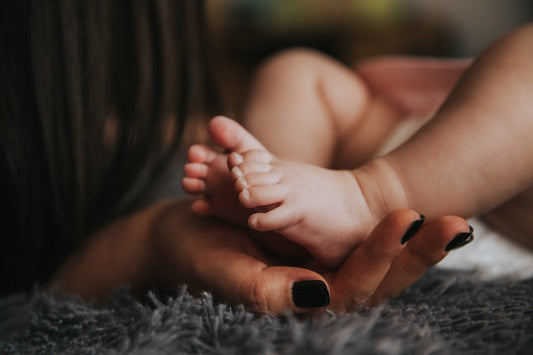THE IMPORTANCE OF IRON FOR BABIES
Written by nutritionist Catherine Lippe RNutr BSc(Hons).
Iron is one of the most important minerals to consider when you start weaning. Learn more about it in our guide below.
What is Iron?
Iron is an essential mineral and one we should pay special attention to during weaning. It helps to make red blood cells that carry oxygen around the body. For infants and young children, iron is essential in supporting both physical and cognitive growth.
Different Types of Iron
There are two types of dietary iron:
- Animal, or haem iron.
- Vegetarian, on non-haem iron.
Animal, or haem iron, includes:
- red meat
- eggs
- fish
- darker cuts of chicken
These haem sources of iron are more easily absorbed by the body. Offering these foods twice a day should be adequate to meet your baby’s iron requirements.
Vegetarian, or non-haem, sources of iron include:
- fortified breakfast cereals (e.g. Weetabix and Readybrek)
- beans
- lentils
- chickpeas
- nuts and seeds
- dried fruits
- green leafy vegetables
Although non-haem sources of iron are absorbed less easily than animal (haem) sources, it is possible to boost iron absorption by pairing iron-rich foods with vitamin C.

How Much Iron Does My Baby Need?
From around six months, iron requirements begin to increase. This is partly because your baby is growing rapidly at this age but also because the iron stores they have built up during pregnancy are starting to fall.
For babies who were born prematurely or whose mother had low iron levels in pregnancy, iron stores may become depleted earlier than six months.
When weaning begins at around six months, and after you have introduced single flavoured vegetables, it is a good idea to include a variety of iron-rich foods, such as our baby food pouches, to help rebuild stores and support your baby’s developing body and brain.
| Age | Recommnended daily iron intake |
| 4–6 months | 4.3 mg/day |
| 7–12 months | 7.8mg/day |
Weaning Sources of Iron for Baby
These foods are great sources of iron for your little one.
|
*Haem Sources of Iron mg/100g of food |
*Non-haem Sources of Iron mg/100g of food |
||
| Liver** | 11.5 | Fortified breakfast cereal | 11.9 |
| Pâté | 5.9 | Tahini | 10.6 |
| Beef mince | 2.7 | Ground cashew nuts | 6.2 |
| Tinned sardines in oil | 2.3 | Dried apricots | 4.1 |
| Scrambled Egg | 2.0 | Porridge oats | 3.6 |
| Tinned tuna in sunflower oil | 1.1 | Brown bread | 2.8 |
| Cooked prawns | 1.0 | Frozen edamame beans | 2.73 |
| Roast chicken | 1.0 | Baby spinach | 2.63 |
| Baked salmon | 0.45 | Kidney beans (tinned in plain water) | 2.26 |
| Raisins | 2.2 | ||
| Red lentils | 2.14 | ||
| Green/brown lentils | 2.11 | ||
| Smooth peanut butter | 2.1 | ||
| Cannellini beans (tinned in plain water) | 1.9 | ||
| Chickpeas (tinned in plain water) | 1.9 | ||
| Peas (boiled) | 1.5 | ||
| Whole wheat spaghetti | 1.48 | ||
| Curly kale (boiled) | 1.1 | ||
| Steamed broccoli | 0.75 | ||
*Iron content calculated using McCance and Widowson’s Composition of Foods integrated dataset (CoFID) 2015
**Liver is an excellent source of iron. However, due to its very high vitamin A content, it should only be offered to babies in small quantities and no more than once per week.

How to Include Iron When Weaning your Baby
When you first start weaning, it’s a good idea to focus on single-flavoured vegetables first.
Once your baby is ready for combinations of foods and progresses to two or three meals a day, it’s a good idea to include iron-rich food at each of their mealtimes. This, in combination with your baby’s usual milk feeds, usually provides enough iron to meet your baby’s daily requirements.
There is rarely a need to offer iron supplements for babies, but if you are worried about your baby’s iron status or think your baby might be at risk of iron deficiency, you should speak to your GP.
Some examples of iron-containing meals are given below:
- Breakfast: 30g Readybrek with 20g (1tbsp) smooth peanut butter and 25g (3) mashed dried apricots = 5mg iron
- Lunch: Babease Beef Ragu (beef, tomato, spelt pasta, sweet potato, carrot and basil) served with 2-3 broccoli florets = approximately 1.5 mg
- Evening meal: Babease Mexican Beans (brown rice, tomatoes, kidney beans, black eyed beans, sweet potato) served with 2-3 sweet potato fingers = approximately 1.25 mg
Babease Top Tip
These are just a few examples, but it is not necessary to count and measure every milligram of iron for your baby. If you are offering a variety of iron-rich foods daily, alongside fruits or vegetables, your baby is likely to receive enough iron to support their growth and development.
Remember that repeated exposure to these foods is key to improving your baby’s acceptance of new foods but above all else, allow your baby to have fun and explore their food.
To learn more about the key nutrients to look out for, explore our complete baby nutrition guide or discover the rest of our baby and child nutritionist’s blog!
GET 20% OFF YOUR FIRST ORDER!
Join the Baby Club for FREE weaning help and advice.



